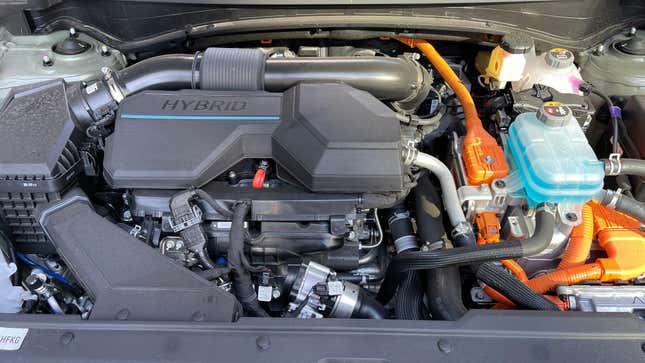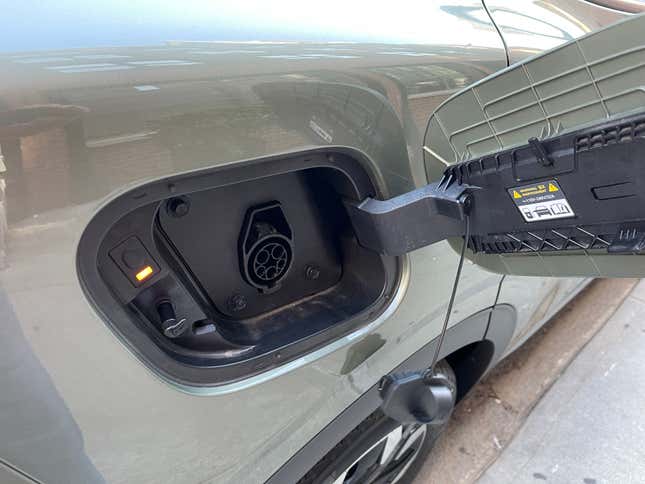Plug-in hybrids are proving to not be the transitional bridge between gas-powered automobiles and electrical autos many of us have been hoping for. That’s a rattling disgrace as a result of when used correctly, PHEVs are completely implausible. A examine from JD Energy is shedding new gentle on how and why clients are unhappy with their plug-in hybrids.
Proper now, there are 41 PHEVs on the market within the U.S. – that’s 12 greater than there have been simply two years in the past. For essentially the most half, the automobiles can go between 25 and 40 miles on a full cost and may be juiced up at dwelling or at a public Stage 2 charger earlier than the fuel motor kicks in. Some automakers are positioning PHEVs as a bridge between gas-powered automobiles and electrical autos to get of us to dip their toes on the earth of electrical automobiles, nevertheless it’s doesn’t appear to be working, as Automotive Information explains:
“There’s been loads of concentrate on creating middleman steps for customers who might not be prepared to totally undertake a battery-electric car but,” Brent Gruber, govt director of the EV follow at J.D. Energy, advised Automotive Information. However the expertise of plug-in hybrid homeowners “actually isn’t favorable compared to battery-electric autos.”
[…]
Total satisfaction on a 1,000-point scale with PHEVs is 669 whereas mass-market satisfaction with BEVs is 716, in accordance with J.D. Energy client satisfaction information. Satisfaction with premium EVs is 738 on a 1,000-point scale.
“Plug-in hybrids have their deserves for sure individuals, however if you have a look at that possession expertise, it’s definitely not as constructive as battery-electric car possession experiences,” Gruber stated.
PHEV gross sales are literally declining proper now. Via August, plug-in hybrid autos represented simply 1.9 p.c of whole car gross sales. That works out to a slight lower from July, JD Energy tells AutoNews. For reference, absolutely electrical autos made up 9.4 p.c of the market and standard hybrids at proper at 10.7 p.c. There’s a giant gulf there between these kinds of autos and PHEVs. It’s not like the opposite two classes have a ton extra choices both. Within the U.S., there are presently 39 standard hybrids on sale and 60 electrical autos.

Right here’s why this lack of gross sales could also be occurring and what OEMs needs to be doing, in accordance with Automotive Information:
PHEVs are expensive to buy and keep as a result of they’ve two powertrains. The possession expertise doesn’t at all times align with the premium value level, particularly as less-expensive BEVs enter the market.
The common transaction value for a PHEV within the compact SUV class is $48,700, whereas compact hybrid crossovers are $37,700 and compact battery-electric SUVs are $36,900, in accordance with J.D. Energy.
“These findings ought to actually body the dialogue and selections round how OEMs plan by means of this transition — going from ICE to battery-electric autos,” Gruber stated. The transition isn’t at all times clean, however PHEV homeowners are likely to have a worse expertise than EV homeowners, he added.
[…]
Higher entry to dependable data — reminiscent of how a PHEV’s electrical vary may match a buyer’s wants — may also help tackle points surrounding client adoption, Gruber stated.

Mainly, what he’s saying is that sellers have to do a greater job of training customers as a result of as soon as they notice charging isn’t that huge of a trouble (and so they don’t want that a lot vary) individuals are usually pleased with the EVs and PHEVs they’ve bought.
I’ve lengthy stated the plug-in hybrid is a wonderful automobile for at present’s automotive world. I do know it’s not a long-term answer, however when you use your PHEV the proper means (charging it up usually), then it’s a extremely good piece of expertise.


